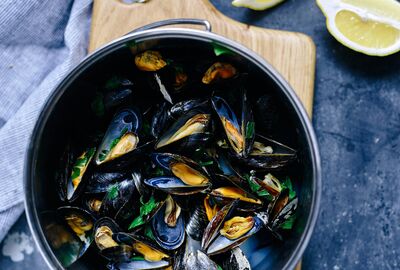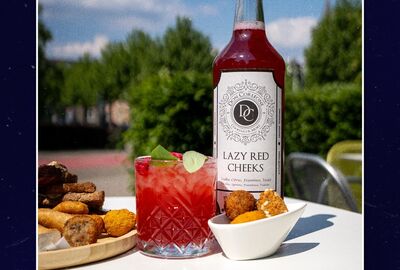
For the true whisky lover, enjoying whisky goes far beyond simply pouring a glass and tasting it. Whisky is a complex drink, full of layers of flavour and aroma that, once you recognise them, can open up a world of enjoyment. Developing your palate is an adventure in itself and can help you appreciate the subtleties in different types of whisky.
In this blog, we will go through some guidelines to train your whisky flavour palette and help you better recognise and understand the nuances of whisky.
Start with your nose: the aromas of whisky
A big part of tasting whisky is in smelling it. Your sense of smell is strongly linked to taste, and by smelling well you can already recognise many of the subtle flavours in whisky.
How do you smell whisky?
- Gently waltz: Before smelling a whisky, gently waltz the glass to loosen the aromas. Do this subtly, as too much rolling can make the alcohol rise too strongly.
- Keep your distance: gently bring your nose to the glass, but not too close. Start at some distance and slowly move closer to gradually experience the intensity of the aromas.
- Think in layers: Try to distinguish between different layers of aromas. What do you smell first? Perhaps fruit or spices? What comes next? Think of aromas like vanilla, oak, flowers, caramel, and smoke.
Tip: Compare several whiskies side by side to better understand the differences in aroma. The fruity notes of a Speyside can be very different from the smoky aroma of an Islay whisky.
Sip slowly: pay attention to mouthfeel and texture
When you taste whisky, it's not just about the flavours, but also how the whisky feels in your mouth. Some whiskies are light and fresh, while others have a full, almost creamy texture.
Recognise mouthfeel and texture?
- Look at viscosity: roll the whisky in your mouth and pay attention to how thick or thin it feels. A whisky that lingers for a long time may have a full body, while a lighter whisky flows away quickly.
- Sweetness and acidity: Try to identify where the sweetness is on your tongue. Is it at the front of your tongue, on the sides (which often indicates sourness), or at the back (which can mean bitterness)?
By being aware of the texture and the way the whisky behaves in your mouth, you can gain a deeper understanding of its style and character.
Dissect the flavours: learn to recognise the subtleties
Whisky can have a range of flavours, from fruity and floral to smoky and spicy. Developing your palate starts with learning to recognise and name those different flavour groups.
Key flavour categories
- Fruity: Think apple, pear, berries, sultanas, orange, lemon or tropical fruit.
- Spicy: Pepper, cinnamon, nutmeg, cloves, ginger and mint are common in whiskies aged in bourbon or sherry casks.
- Sweetness: Vanilla, honey, caramel and toffee are often associated with whisky aged in oak casks.
- Smoke: Smokiness, typical of Islay whiskies, can range from light peat smoke to intense, iodine-like smoke flavours.
- Earthy and woody: Try to look out for flavours like oak, tobacco, leather or even damp earth.
Tip: Take time to taste each sip of whisky slowly and try to identify each flavour component separately. If necessary, make notes on what you taste to train your memory and palate.
The finish: how (long) do the flavours linger?
The finish, or aftertaste, of a whisky is an important part of the experience. This is the moment when the whisky is still present in your mouth, even after you have swallowed. Some whiskies have a short finish, while others offer a long, rich aftertaste that can linger for minutes.
What do you pay attention to when it comes to the finish?
- Length: How long does the flavour linger in your mouth? A short finish can fade quickly, while a long finish fades slowly with ever-new layers of flavour.
- Flavour changes: Try to notice if the flavour changes during the finish. Sometimes flavours that were not noticed at first can only emerge in the aftertaste, such as a subtle smokiness or a hint of chocolate.
Experiment with water and glasses
Water can make a big difference in how you experience whisky. Adding a few drops of water to your whisky can "open up" the flavours and bring out hidden aromas and tastes. High-alcohol whiskies in particular can benefit from a little water.
How do you experiment with water?
- Start without water: First taste the whisky pure to experience the unadulterated flavours.
- Add water slowly: Then add water drop by drop and watch how the flavours change. Sometimes a touch of water can highlight fruity or floral notes that were previously hidden.
In addition, the glassware you use can affect the way you experience the whisky. A tulip-shaped glass like the most common Glencairn whisky glasses concentrates the aromas, giving you a more layered olfactory experience.
Train your palette with tastings and experiments
Developing your flavour palette takes time and practice. One of the best ways to train your palate is by participating in whisky tastings, where you can compare and discuss different styles of whisky with other enthusiasts. Tasting whiskies from different regions, such as Scotland, Ireland, Japan and the US, also helps you develop a broader frame of reference for taste.
Take tasting notes: Keep a notebook in which you write down descriptions of the whiskies you taste. This will help you recognise patterns in the flavours you like and further develop your palate.
Discover the depth of whisky by developing your palette at your own pace
Developing your flavour palette is a process that takes time, but the rewards are great. By consciously smelling, tasting and experimenting, you can truly learn to appreciate the complex world of whisky. Whether you like fruity Speysides, or prefer smoky Islays, each glass of whisky offers new opportunities to explore and refine your sense of taste.
Keep tasting, keep learning and enjoy the journey that each glass of whisky brings with it. Cheers!

Blogger
The text you've just read was (partially) created with the help of ChatGPT . Although every story we write is thoroughly proofread and corrected with the help of ChatGPT, it can always happen that an error has crept in here and there that you, as a seasoned connoisseur, do not agree with.
Therefore, if after reading this blog you do not agree with certain statements that are put forward, please do not hesitate to let us know via service@broekmans.be so that we can further edit this text.
It is a conscious decision to explicitly mention that this blog article was written with the help of AI, as nothing is more valuable than the work, preparations and efforts made by "real" bloggers when they publish blog articles on our webshop (or elsewhere) that are not supported by AI.








